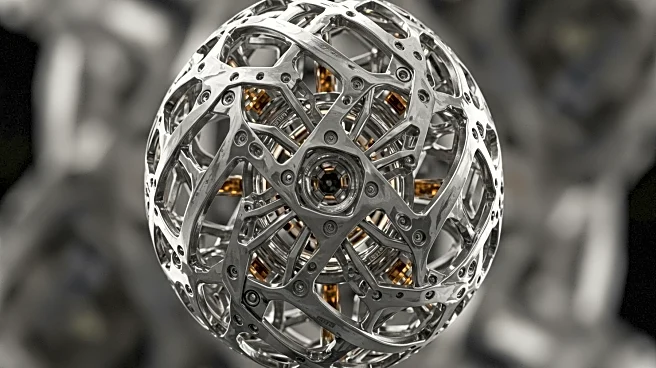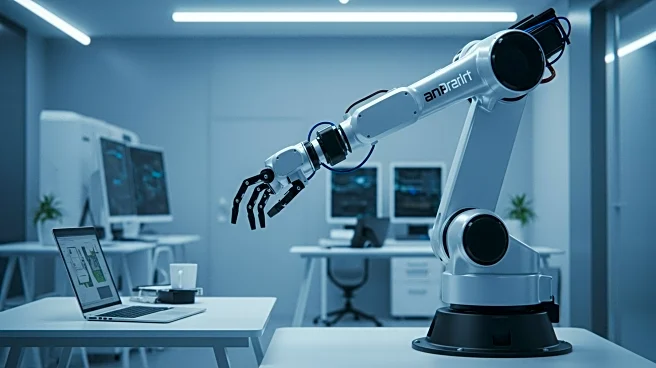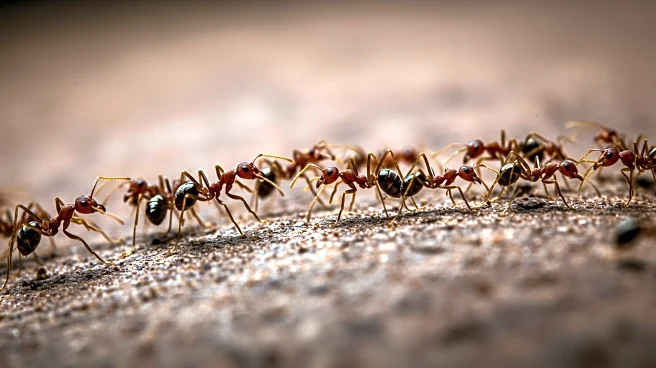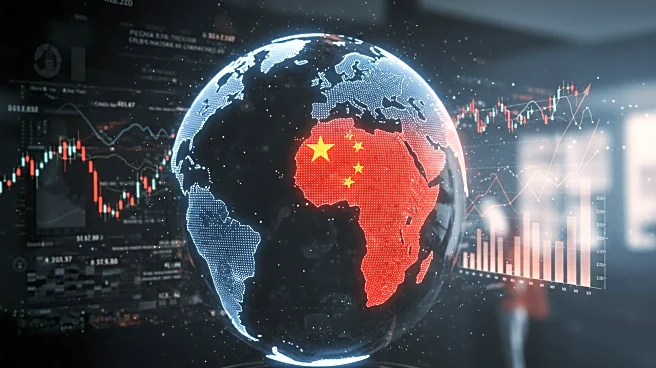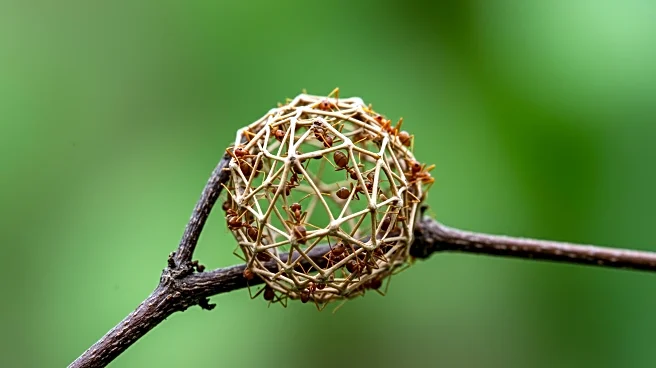What's Happening?
Research published in Current Biology reveals that weaver ants increase their individual pulling force as their group size grows, a phenomenon that could revolutionize robotics. The study, led by Madelyne Stewardson from Macquarie University, found that these ants form super-efficient teams, enhancing their collective strength contrary to the typical human team dynamic where individual effort decreases with larger groups. The ants' ability to form living chains and distribute tasks between pulling and anchoring roles allows them to maximize their force. This discovery, termed the 'force ratchet' by Dr. Daniele Carlesso, could inform the development of robotic teams that work more effectively together.
Why It's Important?
The findings from this study have significant implications for the field of robotics, particularly in designing autonomous systems that can collaborate more efficiently. By mimicking the cooperative strategies of weaver ants, robots could potentially perform complex tasks with greater precision and less energy. This could lead to advancements in various industries, including manufacturing, logistics, and disaster response, where robotic teams are increasingly utilized. The research highlights the potential for biomimicry in technology, encouraging further exploration of natural systems to solve human engineering challenges.
